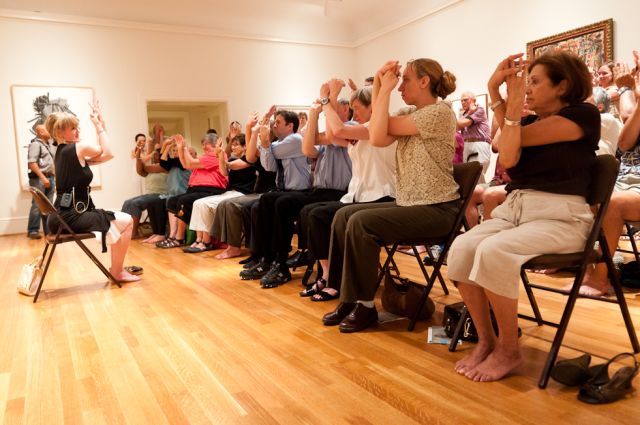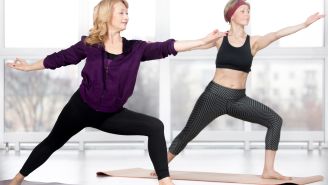Photo Credit: Vincent Gallegos, via Flickr Creative Commons
To stay true to your needs during your yoga postures, you may need more support than just a small tweak here or there. Many people find these adjustments by doing yoga in a chair. Chair yoga offers many more options for staying within your comfort zone and getting the most from your practice.
Subtle Movements to Manage Stress
When you use yoga for managing stress, the goal is to quiet the nervous system and the mind. So using a chair is not just a practice for those with injuries or mobility issues, it’s a route to more quiet and subtle movements so you can shift your attention inward and release stored up tensions.
These movements can improve flexibility and articulate the joints. Most importantly, they help you listen to your body’s signals. With subtle refinement, you can start to become aware of the language of you own body. Yoga is not dependent on how much you move, but how much attention you are developing as you move.
How to Use a Chair to Adapt Some Common Poses
Cobra
- Sitting in a chair, gently hold the sides with both hands.
- On an exhale breath, slowly lower your chin to your chest, allowing the spine to gently round. As you inhale, start to lift your nose toward the ceiling and allow your back to lengthen and even arch slightly. Allow your shoulders to roll back and down naturally. If you have pain in your neck lower your chin slightly. Keep the breath moving.
- This can be repeated three to five times or held with a steady smooth breath.
- Return to a neutral position when complete.
Spinal Twist
- As you sit in the chair, cross your right leg over the left. If that is hard for you to do, leave both feet on the floor.
- Place your left hand on your right knee and use your right hand to grab the chair right below you.
- On the inhale breath, find your inner lift and as you exhale begin to rotate from the tail up through the vertebrae of the neck. Keep your breath smooth and even.
- You might find a little bit of movement in a lot of places rather than a lot of movement in one place. Even your eyes can gaze gently to the back corners. Soften the areas that aren’t necessary for the twist.
- This can be done by coming in and out two to three times or you can enjoy holding for a few breaths and coming out on an exhale breath when ready.
Forward Bend
- From your seated position, allow your feet to separate slightly. Soles on the feet firmly planted on the floor.
- Lean forward from the pelvis and fold your forearms on the thighs. You could even tuck a folded bed pillow against your abdomen for more support.
- Allow your spine to gently round and your head to come forward with your chin resting toward the chest. Take a few breaths and soften the back of the heart. As if your heart were breathing.
- To come out, use the support of the arms to press and roll up.
Be Creative
So many postures can be adapted to sitting in a chair. Think about how you could adapt each one of the poses so they are enjoyable and supportive for your body. Also, ask your yoga teacher for suggestions. Let yourself experience your yoga practice as a time to connect with yourself just where you are.
Looking for other ways to live a healthier, happier life? Reverse heart disease and diabetes, lose weight and reduce stress with these tips from Dean Ornish.
This content was originally published on Ornish Living.






